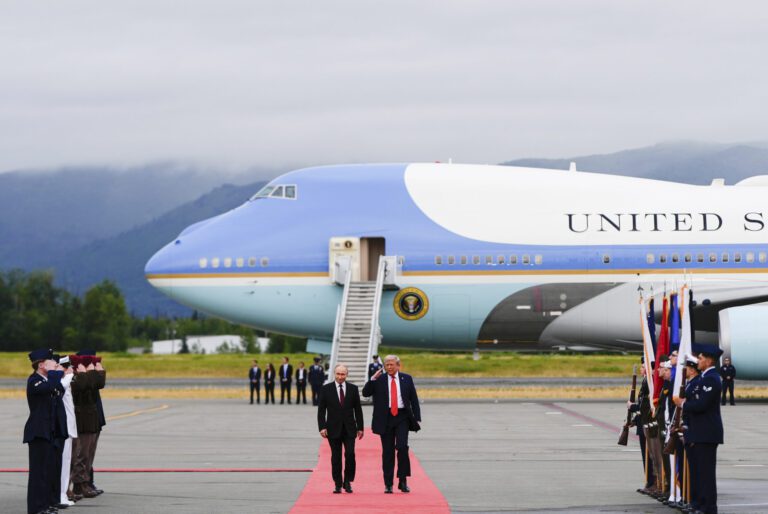Menu-Gate: The Intriguing Details Behind Trump’s Luncheon with Putin
Recently, a peculiar incident dubbed "menu-gate" has unfolded, shedding light on the behind-the-scenes planning of a high-profile meeting between President Trump and Russian President Vladimir Putin. This chain of events offers a captivating glimpse into the dynamics of presidential diplomacy, and along the way, it has created quite a stir in media circles.
What Happened?
National Public Radio (NPR) reported that sensitive documents regarding the luncheon were inadvertently left on a printer at the four-star Captain Cook Hotel, located near Joint Base Elmendorf-Richardson. These details came to light mere hours before the summit, when a hotel guest stumbled upon the papers and passed them on to NPR, where the source’s identity was protected.
Key Details Revealed
The documents included:
- A three-course menu for the luncheon
- A pronunciation guide for notable attendees
- Luncheon seating charts
- Information regarding the customary gifts for heads of state
- Phone numbers of three staff members (redacted) involved in the planning
The incident has been described as a "lapse in professional judgement," yet it has sparked mockery and debate from various quarters, particularly from the White House.
Reaction from the White House
White House Deputy Press Secretary Anna Kelly humorously responded to NPR’s report, stating:
“It’s hilarious that NPR is publishing a multi-page lunch menu and calling it a security breach. This type of self-proclaimed ‘investigative journalism’ is why no one takes them seriously.”
The tone of the response underscores a recurring theme of dismissing media scrutiny, a tactic frequently employed by the Trump administration.
A History of Slip-ups
This is not the first time the current administration has faced repercussions from miscommunication. Earlier in the year, a classified message sent via the Signal app accidentally included a journalist, demonstrating the ongoing challenges of maintaining discretion and security in high-level discussions.
The Menu: Halibut Olympia Takes Center Stage
Amid the political drama, the menu itself has drawn its share of attention. The centerpiece, Halibut Olympia, has been critiqued for its "homey and comforting" presentation. Jeremy Pataky, editor of Edible Alaska, commented:
“To see that on the menu for an extremely high-level state dinner felt a bit surprising.”
For further details about the nuances of diplomatic cuisine, check out the New York Times review on the menu’s selections.
Conclusion
The “menu-gate” incident has provided a fascinating snapshot of the often-overlooked aspects of presidential diplomacy. While the leaked details seemed more embarrassing than anything else, they’ve generated discussion not just about the administration’s handling of classified information but also about the culinary choices made at the highest levels of government. The conversation surrounding this event showcases the intersection of politics and culture in today’s world.
This unexpected disclosure serves as a reminder that in the arena of global diplomacy, the smallest details can become the subject of significant scrutiny and discussion. The curious case of the luncheon menu serves as food for thought—quite literally!


